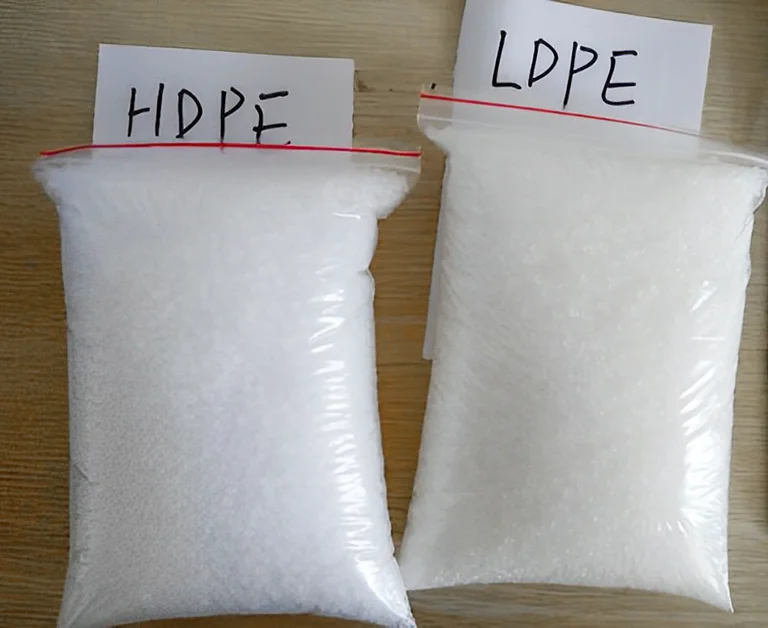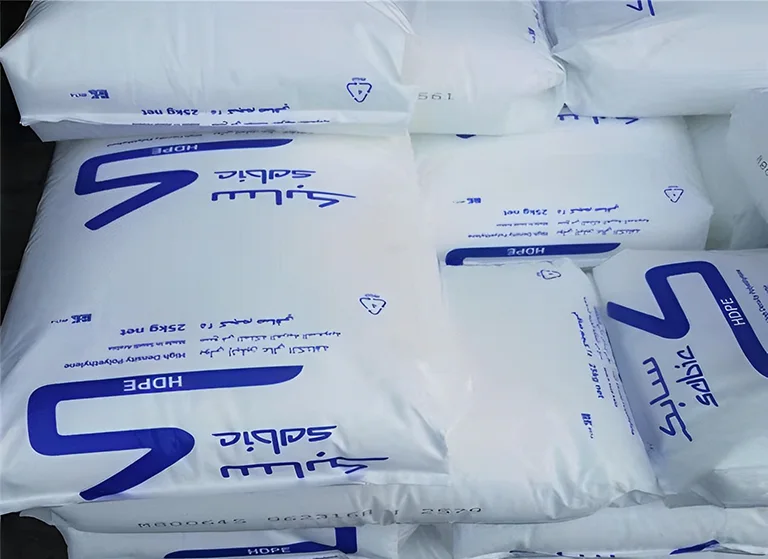Polyethylene (PE) is a versatile thermoplastic that can be made into various forms based on its chemistry. The most common types are high-density polyethylene (HDPE) and low-density polyethylene (LDPE), but there are also many other types. Despite sharing some commonalities, HDPE injection molding vs. LDPE injection molding exhibit distinct chemical structures. These differences give rise to various physical characteristics that in turn define their applications and processing methods.
To help you explore all the different variations of polyethylene injection molding, we recommend this article focus on high-density polyethylene, also known as HDPE, and low-density polyethylene, also known as LDPE.
Also Read: How to Choose the Best CNC Machining Company for Your Products?
HDPE injection molding vs. LDPE injection molding: The Chemistry Behind the Distinction
Although their chemical structures are significantly diverse, both high-density polyethylene (HDPE) and low-density polyethylene (LDPE) are kinds of polyethylene having ethylene (-C2H4-) as their principal monomer structure. One of the distinguishing features of LDPE is its highly branched polymer structure.
However, even HDPE can display some degree of branching. Straight rods can be stacked together to produce an analogy highlighting this distinction instead of rods with protrusions on the sides.
Because of the blockage provided by the protrusions, the latter would have a lower density, making it more difficult to pack closely together and contributing to the lower density. However, HDPE contains fewer branches, so it can be packed more tightly, contributing to the material’s higher density.
The distinct qualities derived from their chemical structures define HDPE and LDPE’s practical applicability in various sectors.
Also Read: 2 Plate Mold or 3 Plate Mold: The Difference

High-Density Polyethylene (HDPE):
Because of its high density and great water resistance, HDPE is suitable for making caps used in bottles and beverages. The material’s capacity to maintain product purity and safety is widely used in the beverage sector.
HDPE is extensively used to construct containers such as bottles for personal care items, cleaning solutions, and automotive fluids due to its stiffness and ability to produce varied shapes.
Moreover, its toughness and durability help to explain its prominence in various applications. Due to its impressive chemical resistance, HDPE finds extensive use in various local industries. Its capacity to withstand corrosive liquids and hard environments assures reliable performance and lifespan in pipelines, fuel tanks, and cables.
Considering that, HDPE’s great flexibility and tensile strength make it a popular material in areas such as maritime and fishing. It is widely utilized in the production of ropes and fishing nets, giving resilience and dependability under harsh environments.
Low-Density Polyethylene (LDPE):
LDPE is a popular material for making shopping bags and packaging films because of its flexibility and ability to form thin films and flexible sheets. These bags provide lightweight yet durable packaging alternatives for various retail products.
Because of its squeezability, LDPE is perfect for making bottles for distributing liquids such as condiments, sauces, and personal care products. Its adaptability allows for simple and precise dosing. The capacity of LDPE to adapt and shrink tightly around objects throughout the packaging process makes it important in shrink film manufacture.
These films provide safe and attractively appealing packaging for a variety of commodities. Because of its low cost compared to alternative materials such as paper and certain polymers, LDPE is a popular choice for various packaging applications, contributing to its widespread use in shopping bags and packaging films.
A Brief Comparison:
Finally, the chemical structures of HDPE and LDPE considerably impact their physical qualities and, as a result, their practical applications. The linear structure and higher density of HDPE make it ideal for applications that require rigidity, chemical resistance, and dimensional stability.
In contrast, LDPE’s branching and lower density allow for flexibility, ease of processing, and cost-effectiveness in diverse packaging solutions. Understanding these distinctions enables enterprises to make informed decisions, picking the best type of polyethylene to satisfy their manufacturing requirements.
Also Read: 6 Common Challenges Faced by CNC Manufacturing Companies

The Many Applications of LDPE
LDPE is a material in great demand for applications requiring modest moisture barriers and strength. This is because LDPE possesses outstanding flexibility and the capacity to make thin films and flexible sheets. Because of its adaptability, it is used extensively in a wide variety of industries, including the following:
Shopping Bags:
LDPE’s flexibility and ease of forming into thin films make it a great choice for producing shopping bags. These bags provide a lightweight yet strong packaging option for retail products, assuring convenience for customers while also contributing to environmentally responsible business practices because they are recyclable.
Shrink Films:
The conforming capability of low-density polyethylene (LDPE) to tightly wrap around objects during packaging is vital. This quality is indispensable in the production of shrink films. These films offer a secure packaging solution for various products, ranging from food items to consumer goods, thereby boosting the product’s protection and appeal on the market.
Bottles Used to Dispense Liquids (Squeeze Bottles):
LDPE’s flexibility suits squeeze bottle designs, making it ideal for dispensing liquids like sauces and personal care products. This makes LDPE the preferred choice for such applications. The LDPE bottles’ compressibility enables simple and accurate dosing because of their ability to be squeezed.
Films for Cost-Effective Packaging:
One of the primary benefits of LDPE is that, in comparison to other materials, such as paper and some polymers, it is far more cost-effective to use. Because of its low production cost, it is ideal for producing packaging films for various sectors. These films provide the industry with a packaging solution that is both economical and dependable.
Also Read: Types of CNC Machines – The Types and How They Work
The Many Applications of HDPE
Because of its outstanding resistance to chemicals and minimal water absorption, high-density polyethylene, or HDPE, is appropriate for a wide variety of applications across a variety of industries, including the following:
Caps for Water Bottles and Other Beverages:
Because HDPE does not readily absorb water and is resistant to chemical breakdown, it is an ideal material for producing bottle caps for water bottles and other beverages. These caps protect the integrity of the contents and their safety, thereby preventing contamination and preserving the freshness of the product.
Diverse Shapes in Consumer Products:
The ability of high-density polyethylene (HDPE) to maintain its rigidity while being formed into a variety of shapes makes it an excellent choice for use in a wide range of consumer goods. Toys, toolboxes, rubbish bins, and other containers, which require durability and strength for regular use, are frequently made out of this material because of its widespread availability.
Industrial Applications:
Pipes, fuel tanks, and cables: HDPE’s high resistance to water and chemicals makes it a material of choice for various industrial applications, including those involving pipes, fuel tanks, and cables. Because of its resistance to corrosion and chemicals, it finds widespread application in producing piping, fuel tanks, and cable sheathing. These applications require dependable performance over a long time.
Flexibility in Ropes and Fishing Nets:
Ropes and fishing nets benefit from HDPE’s flexibility because of the material’s high tensile strength and flexibility. This property makes HDPE an excellent choice for applications that require flexible and sturdy materials. Ropes and fishing nets used in the maritime industry use high-density polyethylene (HDPE), which offers endurance and reliability in adverse environments.
Also Read: The Ultimate Guide to Designing, Making, and Maintaining The Die Casting Mold
Ultra-High Molecular Weight Polyethylene (UHMWPE) Injection Molding:
Other than low-density and high-density polyethylene injection molding, ultra-high molecular weight polyethylene injection molding is another common approach. And how is this different from the others?
The mechanical qualities of ultra-high molecular weight polyethylene (UHMWPE) are good, with great abrasion resistance and impact strength. Moreover, because of its low coefficient of friction, it is also resistant to abrasion and wear. UHMWPE is employed in medical applications such as the articulating surfaces of joint replacements used in hip, knee, ankle, and shoulder surgery.
Because UHMWPE is nearly completely inert, it can be used in corrosive or aggressive conditions at moderate temperatures. Many solvents remain resistant to it at higher temperatures, with noteworthy exceptions like aromatic and halogenated hydrocarbons. The specific UHMWPE grade influences how resistant the material is to wear, chemicals, and impact.
Molecular weight is important in plastic injection molding using polyethylene material because of its relationship to crystallinity and because it affects the melt rheology of a thermoplastic. Higher molecular weight resins, such as UHMWPE, have a higher viscosity and pressure decrease in the injection mold cavity during filling. As a result, greater packing pressure is required to compensate for the cavity pressure drop. Otherwise, the lower pressure melt will cause the final part to shrink.
Suggested: Steps to Consider When Processing CNC Machining Projects
Conclusion:
Finally, polyethylenes are an excellent material for injection molding. While LDPE lends itself better to film and sheets, HDPE lends itself well to injection-molded items. They are well-suited for injection molding using polyethylene material because of their thermomechanical characteristics, chemistry, and rheology. Recent advancements show the possibility for HDPE that can resist multiple molding cycles.
For more details and queries regarding polyethylene injection molding, contact our professional manufacturers at Prototool.com.










